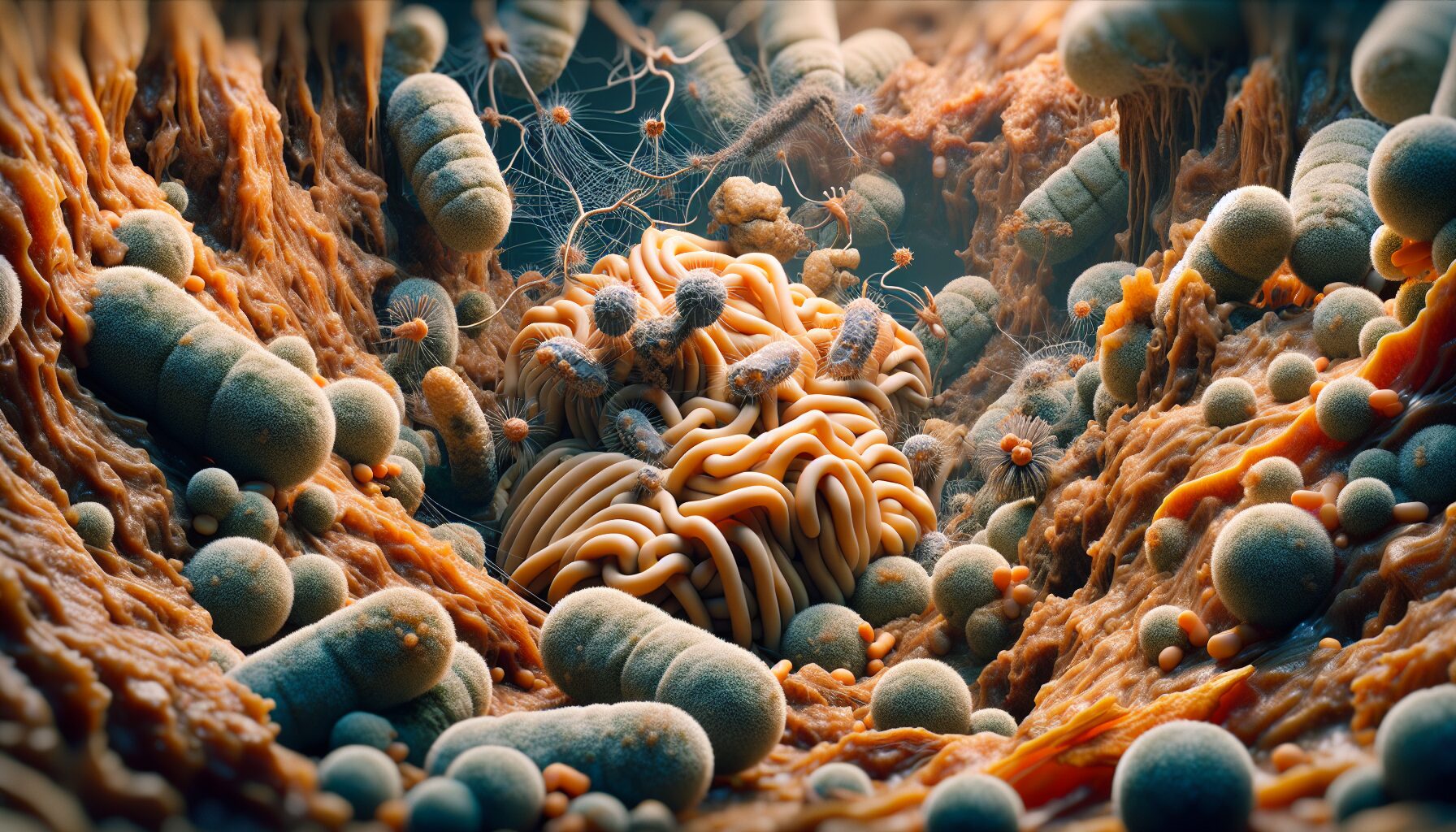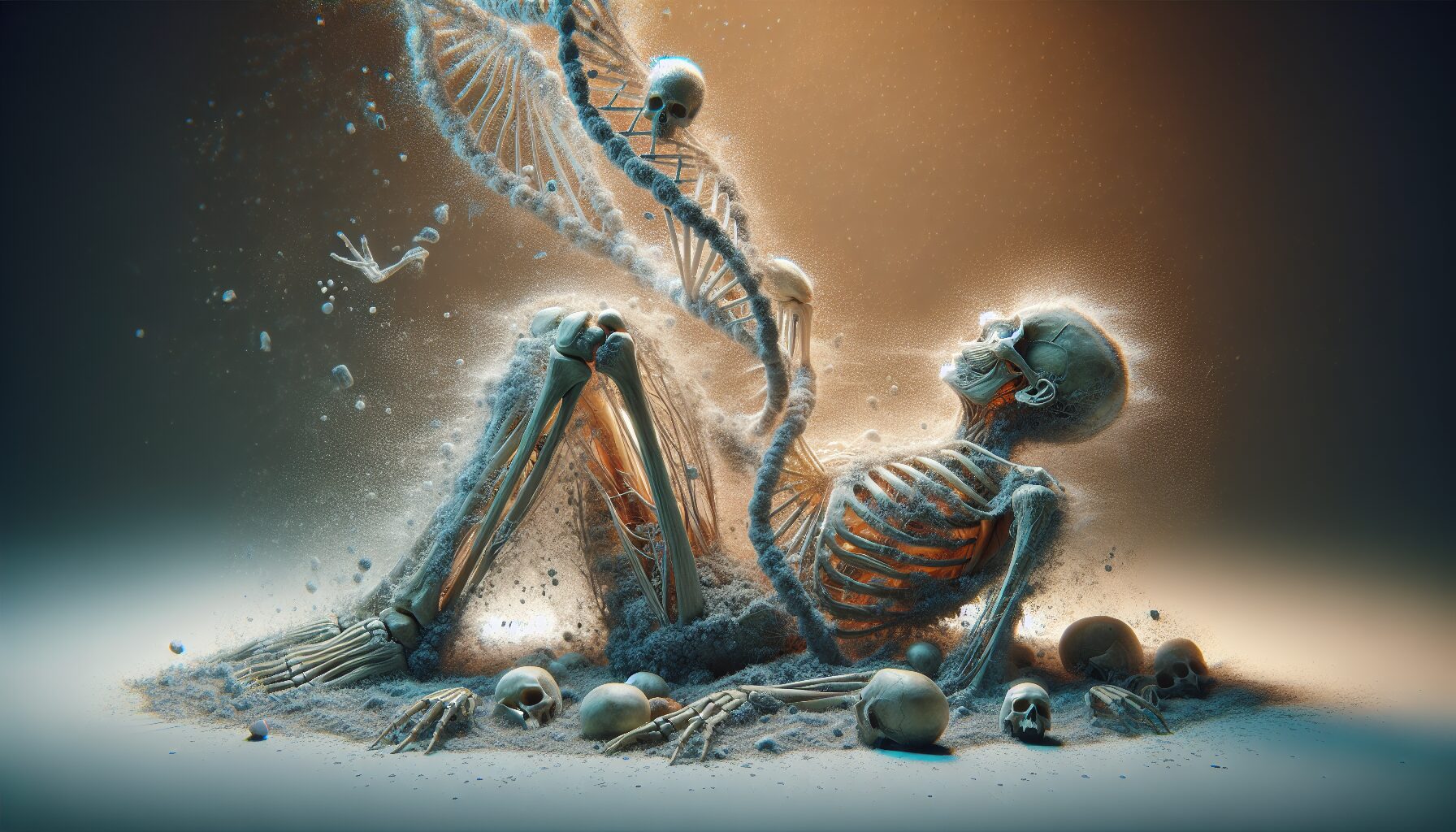Decomposition might not be the most pleasant of topics, but it is an essential ecological process that supports life in myriad ways. The microbiology of rot is a fascinating subject, demonstrating how death begets life. Behind this transformative firework of breakdown and rebuilding lies a complex web of microbes, working tirelessly to convert organic matter back into vital nutrients.
The Microbial Orchestra of Decomposition
When an organism dies, a symphony of microbial activity begins almost immediately, aiming to recycle the body’s nutrients. The breakdown of organic material starts as bacteria, fungi, and other microorganisms feast on the tissues, releasing enzymes that catalyze decomposition.
- Bacteria: These are the pioneers in the decomposition process, colonizing a dead organism within minutes to hours. According to a study published in Nature, specific bacterial strains such as Pseudomonas and Clostridium play critical roles by breaking down proteins and carbohydrates.
- Fungi: As bacterial action progresses, mold fungi join the fray, capable of decomposing complex carbohydrates like cellulose and lignin in plant materials. Fungi’s mycelial networks increase surface area contact, breaking down matter even further.
- Actinomycetes: These are a group of soil bacteria that come into play during the later stages of decomposition. Known for their earthy scent, they degrade the tough, woody substances left behind by other microorganisms.
“Fungi and bacteria are the unsung heroes of the soil, working in harmony to convert death into life, sustaining the food web from the ground up.” — Dr. Elaine Ingham, a renowned soil scientist.
The Stages of Decomposition
Decomposition unfolds in several stages, each dominated by different microbial communities. Professor Lynn Margulis, a co-developer of the Gaia theory, emphasized the importance of this underappreciated process, saying, “Decomposition is the heroic act of the microbial world turning death into life-enabling nutrients.”
- Initial Decay: Begins immediately after death, during which microorganisms already present in the body start digesting tissues.
- Putrefaction: Characterized by the breakdown of soft tissues; bacteria thrive in an anoxic environment, emitting gases like methane and hydrogen sulfide.
- Black Putrefaction: Rapid microbial growth turns tissues black with an odor, attracting insects that also aid decomposition.
- Butyric Fermentation: Features a shift towards butyric-acid producing bacteria, breaking down remaining fats in anaerobic conditions.
- Dry Decay: The final stage where microorganisms decompose whatever material remains until only bones and hair are left.
Ecosystem Impacts of Rot
The process of decomposition releases a vast array of nutrients back into the soil, nourishing plants and, through them, the entire food web. Soil microbes such as Rhizobium and mycorrhizal fungi form symbiotic relationships with plant roots, facilitating nutrient exchange and promoting plant growth. This cycle is a testament to the essential connection between decay and ecological health.
Human and Environmental Implications
Understanding the microbial processes of decay can have significant applications, from forensic science to waste management and agriculture. In forensic science, the microbial ecosystems forming on decomposing bodies can help estimate time of death. In agriculture, harnessing microbial activity can optimize composting efforts and reduce reliance on chemical fertilizers.
Furthermore, as we face the environmental impacts of modern waste, learning from nature’s decomposition experts offers sustainable solutions. According to a report in Frontiers in Ecology and Evolution, the study of microbial strains that efficiently decompose plastics and other pollutants is a burgeoning area of research.
Conclusion
The microbiology of rot illuminates a profound truth: life feeds on death, in a perpetual cycle essential for sustainability on Earth. By understanding and respecting this natural process, humans can work more harmoniously within ecological systems. Embracing the regenerative power of decay not only enriches soil but nourishes our understanding of life’s intertwined complexity.

